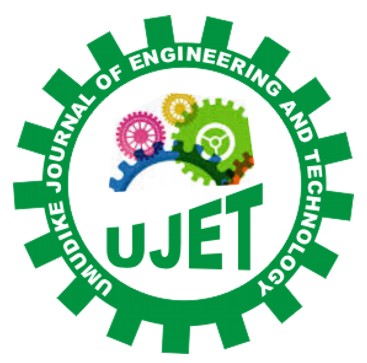|
Onyelowe, K. C.
Department of Civil Engineering, Michael Okpara University of Agriculture, Umudike, Nigeria
Ekwe, N. P.
Department of Chemistry, Michael Okpara University of Agriculture, Umudike
Okafor, F. O.
Department of Civil Engineering, University of Nigeria, Nsukka, Nigeria
Onuoha, I. C.
Department of Environmental Technology, Federal University of Technology, Owerri, Nigeria
Maduabuchi, M. N.
Department of Civil Engineering, Michael Okpara University of Agriculture, Umudike, Nigeria
Eze, G. T.
Department of Civil Engineering, Michael Okpara University of Agriculture, Umudike, Nigeria
ABSTRACT
The soil improvement potentials of Nanosized Waste Tyre Ash were investigated with a view to studying its effect on the Geotechnical properties of the stabilized lateritic soil. The behaviour of the soil was studied with different proportions of the NWTA i.e. 0% (control), 3%, 6%, 9%, 12% and 15% by conducting the soil properties’ tests; soil classification or grading test, specific gravity, compaction test, consistency limits test, unconfined compressive strength (UCS) test, California bearing ration (CBR) test and UV/VIS spectrophotometric characterization was conducted on the ash to determine the absorbance, wavelength and average particle size. The results of the test show that; the soil was classified as A-2-7 soil on AASHTO classification with group index of 0, a Matlab program run on the sample also predicted that the soil is made of silty or clayey gravel and sand and that the general rating as a sub-grade material is ‘GOOD”. The average particle size of the ash by using the Debye Scherrer method was 11.358 nm, maximum absorbance of 1.120 nm at the wavelength of 650 nm. The MDD decreased from 1.84g/cm3 of the control experiment to 1.57gm/cm3, 1.56g/cm3, and 1.53g/cm3 at 3%, 6% and 9% proportions of NWTA respectively, and eventually increased to 1.54g/cm3 and 1.55g/cm3 at 12% and 15% proportions of NWTA. The OMC also decreased from 13% on natural Olokoro lateritic soil. The plasticity of the sample decreased remarkably from highly plastic sample of 21.85% PI on the control test to 10.65% at 15% proportion of NWTA. The CBR decreased from 14% control test on addition of NWTA to 3% at 3%, 6%, 9%, and 12%. It also increased to 5% at 15% proportion of NWTA. Fortunately, the unconfined compressive strength test yielded good results. It increased from the control test result on all 7, 14 and 28 days curing from 194.26kN/m2, 219.11kN/m2 and 230.77kN/m2 to 241.73kN/m2, 253.03kN/m2 and 214.54kN/m2 respectively at 3% proportion of NWTA. Further addition of NWTA reduced the strength except at 28 days curing, which increased to 283.19kN/m2 at 6%. However, NWTA has proved to be a good admixture in the stabilization of Olokoro lateritic soil and is therefore proposed for use as a subgrade and subbase material for south eastern roads in Nigeria.
Keywords: Geotechnical Investigation; Nanosized-Waste Tire Ash; UV-VIS Spectrophotometric test; Stabilization; Engineering Soil, South Eastern Nigeria
|
View: 369 | Download: 3
Published
Wednesday, June 21, 2017
Issue
Vol. 3 No. 1, JUNE 2017
Article Section
GENERAL
The contents of the articles are the sole opinion of the author(s) and not of UJET.
|


